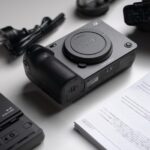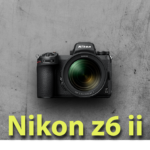The LUMIX S5 II didn’t make any significant changes because it rested on the solid basis of the original LUMIX S5’s durable compact building, class-leading 5-axis in-body image stabilization, and excellent color science. But, the S5 is now on with some of the most significant hybrid cameras money can buy because of its inclusion of phase detection autofocus.
be looking at an option for a camera of the year.
Specifications For THE PANASONIC LUMIX S5 II
THE PANASONIC LUMIX S5 II
- Sensor: CMOS 24.2 MP without Low Pass Filter
- Co-developed image processor with L2 Technology
- 779-point Phase Hybrid AF Dual Native AF points ISO: Auto, Low, or High ISO sensitivity: ISO100-51200
- 6000x4000L (RAW, JPEG) and 96MP High-Resolution Mode (RAW, JPEG) are the highest possible image sizes.
- 1728-zone multi-pattern sensing system, center-weighted, and spot metering modes
- Video: C4K/60/50/30/24p, 5.9K/29.97/25/24/23.98p, and 6K (Full-sensor readout)
- HFR: FHD/180/120/100/60/30/24p, C4K/47.95/48p, 4K/47.95/48p, or 3.3K/47.95/48p
- EVF, 3.68 m dots, as a viewfinder
- 2 SD/SDHC/SDXC (UHS-II) cards for memories
- 3-inch touchscreen LCD with 1.84 million dots
- Highest burst: 7 fps with AF-C and 30 fps with the electronic shutter.
- Bluetooth and Wi-Fi connectivity
- Weight: 740g (Body, Hot Shoe Cover, Battery, and Card x 1) Dimensions: 134.3 x 102.3 x 90.1 mm
Unfortunately, those who hoped that updating the firmware would enhance the focusing performance of older LUMIX cameras were going to be disappointed. With its fully modified image sensor and CPU, the LUMIX S5 II can read data faster and use more complex algorithms. The S5 II’s new imaging system completely fulfills the majority of its stated goals.
How successful is the LUMIX S5 II’s autofocus? How does the lumix S5 II stack up with the S5? The greatest people want to be aware of that. The two newest LUMIX cameras, the LUMIX GH6 and LUMIX S5 are usually quite reliable, though not speedy. Though, the LUMIX S5 II combines phase detection autofocusing and DFD technology to supply an answer that represents significant gains in terms of consistency and speed.
The camera’s outstanding 3,680k OLED viewfinder offers a clear view of the scene. The camera determines subjects quickly and forms a dynamic box around both people and animals. When subjects are nearby, it can also identify faces and eyes, and it will further highlight those. The S5 II’s autofocusing can be adjusted fairly easily.
Autofocus of lumix s5 ii
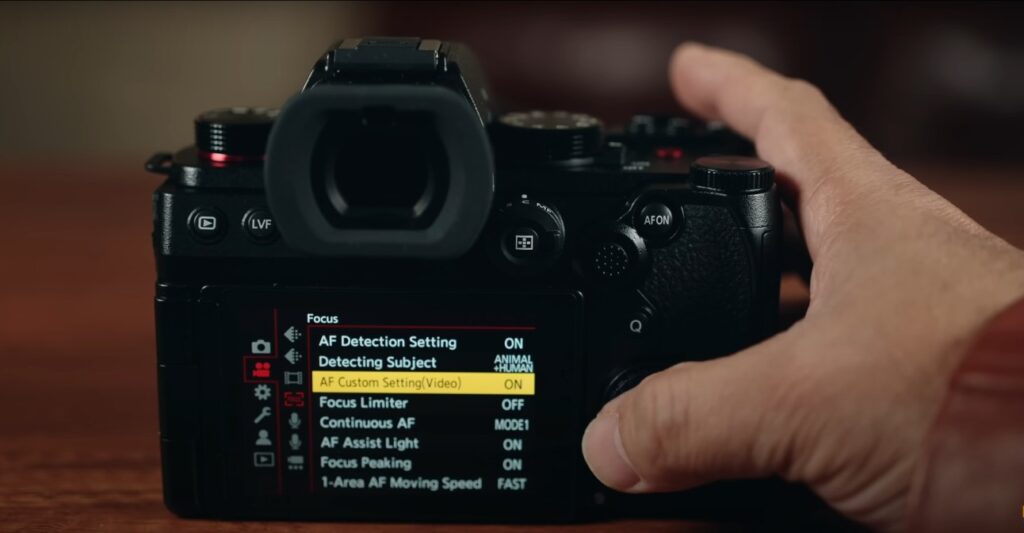
You can select the sort of focus you want as well as its speed and sensitivity. Human, Face/Eye, and animal/human detection were your choices.
If there are a lot of subjects in the image, you can use the joystick or tap the screen to select which one you would like to concentrate on. The S5 II accurately and rapidly recognizes subjects as they enter the sensor of the camera.
People come first. Though there’s potential for growth, I would like to see more subject recognition decisions, such as AF detection for birds and automobiles. It would be great to see LUMIX increase its range of AF detection settings, as Fujifilm, Canon, and Sony all have far more comprehensive AF Subject Detection settings.
Watch the face priority autofocus shift between a human face and a statue’s face in the picture above.
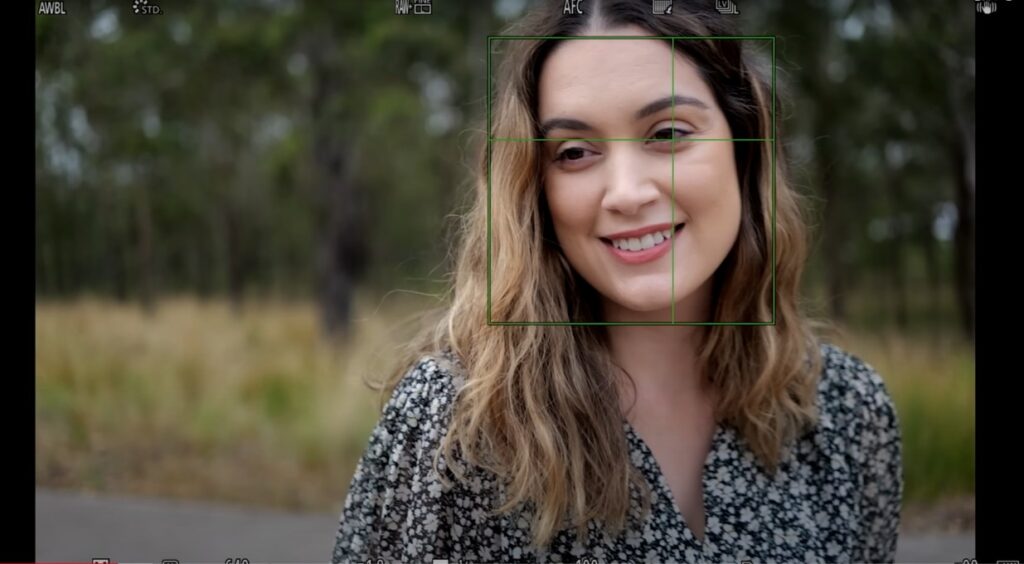
The S5 II can shoot stills at 7 frames per minute in bursts of 200 frames or greater with AF-C and RAW+JPEG. Its mechanical shutter is capable of recording at 9 frames per second with AF-S or at 30 frames per second. It has an electronic shutter and AF-C if you need more speed. The findings were outstanding, even though I continued to use pre-production firmware at the time of testing.
The camera lost focus just a bit on one or two frames from a panning burst of a person running in flat light for bursts of 10 to 20 frames. But there were still a lot of photos from my sequences that could have been used.
Bird shooting was a little harder. I was able to get some accessible pictures of birds in flight using both of the LUMIX S PRO 70-200mm lenses, F4 and F2.8. tracking their movements without The aid of an algorithm intended to foresee their movements was harder than I’ve found when using cameras like the Sony A7IV or Fujifilm X-H2S.
Yet, firmware may be used to solve problems, and those mentioned rivals have an excellent start. The fact that we are able to compare LUMIX to more costly cameras with some of the most significant AF systems on the market is an indicator of the brand’s development.
The LUMIX S5 II is a distinctive camera in its class when it comes to video because it offers a wide range of recording and video monitoring abilities that are uncommon at its price point. The GH6 and the swift Fujifilm X-H2S serve as the hybrid camera’s main rivals in this group.
It has a 25.2-megapixel micro-four-thirds sensor, while the X-H2S has a slightly higher resolution (26.1-megapixel APS-C) sensor. Both rivals can capture 4K/120p video and internal ProRes 422 HQ due to their smaller sensor sizes.
Those are two features that the S5 II should have possessed, but I would not give up the full-frame sensor for them. You can employ the LUMIX S5 II camera If you’ve subjected it to your tastes and perhaps used its Real-Time LUT capacity, you can produce cinematic-grade video that doesn’t need any editing in post-production.
Its 10-bit files, however, are sufficiently powerful to modify saturation in typical profiles, recover somewhat blown highlights, and increase underexposed photos without negatively impacting the quality of your audio recordings. In addition, it has a complete V-Log as standard and lets you pre-load up to 10. cube LUT files to help with flat footage.
Display of Lumix s5 ii
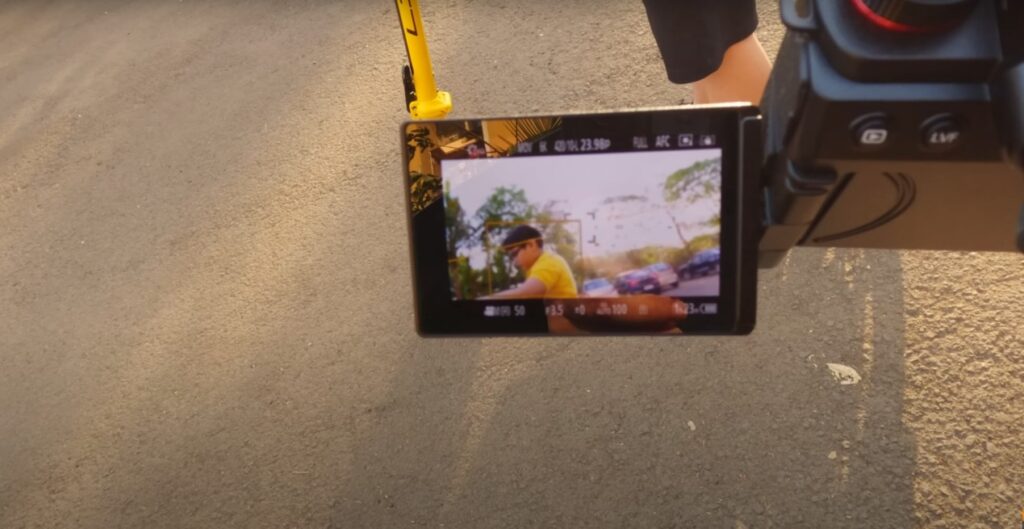
Luminance Spot Metering, Waveform/VectorScop, Anamorphic Desqueeze Display, Synchro Scan, and other renowned assistance operations are also offered. These add-ons are part of what makes the S5 II such a fun camera to use. Because it was developed with the goal of being employed for the making of videos.
There is not much to say about the image stabilization in this camera beyond what has been said about the just-added “Active I.S.” in the features section. At present, the LUMIX S5 II’s picture stabilization continues to be among the best in its class. In addition, it will often allow you to avoid using a tripod or gimbal. The S5 II’s 5-axis IS can stabilize your video if you don’t need any further stabilization or are attempting to carry light. Beyond black magic, it can maintain a frame steadily.


Watch the Lumix S5 II’s ground-breaking active picture stabilization in action above as it smooths out a jarring vehicle ride.
Lastly, the S5 II’s battery life isn’t nearly as good as the LUMIX S5’s due to the fan, unless you use the camera solely in Power Save mode. But somewhere, a compromise must be made. This camera is expected to last a full day of use as long as you have two or three entirely charged batteries.
It was nice to be able to connect my BioLite Charge 80 power bank straight to the Type-C port of the LUMIX S5 II and continue shooting while I got low on batteries because I had forgotten to charge my additional battery. Any power bank that has a 5V–9V input is recommended.
For our lab data judgment, we compared the Panasonic S5 II to three full-frame mirrorless competitors with similar price tags: the Canon EOS R6 Mark II, Nikon Z 6II, and Sony a7 IV.
We trialed resolution using charts and software, and we measured dynamic range and signal-to-noise ratio through the DxO Analyzer.
Video Quality of S5 II
The lumix s5 ii is more than simply a still camera, just like its closest rivals. In numerous respects, its video capabilities are on par with the finest in its class. Contrasting it to Panasonic’s own, particularly video-focused S1H is informative since the S5 II has many of the same capabilities.
For example, it offers a 6K ‘open gate’ option in a 3:2 aspect ratio, which makes it the only lens in its class that can output pictures from the entire sensor region. In addition, it is the only camera at this price to come with a fan to prolong recording sessions in warmer weather. Other opportunities involve employing this 6K capture in UHD or DCI 4K or 6K in 16:9 or 1.89:1 movie aspect ratios.
All of these choices are accessible in All of these formats are accessible in 10-bit and offer highly useful Log movies, or you may select the HLG output if you want footage that was shot without a camera for viewing on HDR TVs.
Even the S1H has Panasonic’s ‘Active’ IS mode, which provides a greater degree of correction while the camera is in motion.
However, excellent video has become increasingly common in this area of the market, and the S5 II’s 24MP sensors lack an uncommonly quick readout.
It is significantly faster than the Sony a7 IV, which, but possessing good requirements, we do not recommend for video. But it is still too slow for shooting 4K 60p with cropping. Typically, this makes wide-angle framing harder to produce, which ends in a decrease in quality.
Yet, the S5 II is a very, excellent video camera if you take into consideration unique features like the ability to film with anamorphic lenses, 4-channel audio (with an extra adapter), waveform displays for controlling exposure, and vector scopes for understanding colors.
Resolution (line widths/picture height)

lumix s5 ii 33 MP on tap, it’s no surprise that the Sony a7 IV is the camera to beat in this sector if absolute part capture is of specific interest to you. The S5 II’s pictures are a little more prone to showing moiré than people from the Canon and Nikon cameras, which has the resulted of somewhat confusing the resolution designs on our test chart. Consequently, the S5 II scores somewhat lower than the EOS R6 II and Z6 II, regardless of it having fundamentally the same sensor resolution.
Dynamic range (EV)

The lumix s5 ii is durable when it originates to taking dynamic range, practically identical the class-leading Z6 II through the tested compassion range. At high ISOs, the Panasonic can capture as much as 2EV more dynamic range than the Canon and Sony cameras.
Signal-to-noise ratio (decibels)

Graph taken with a Panasonic Lumix S5 II cameras In this test, the camera’s random noise production is calculated as a proportion of the actual imagine data, or the “signal,” generated at different ISO levels. More pixels are preferred, and when the ISO is raised, the signal-to-noise ratio should drop.
While the Z6 II’s pictures are significantly cleaner across the tested sensitivity range, the S5 II’s pictures have equally similar levels of noise to those from the EOS R6 II. Perhaps in advance, Sony’s pictures have a little more noise than those from the 24MP cameras in the test due to the extra megapixels that have been grasped into the sensor.
Conclusion
Panasonic has made an enormous leap with the Lumix S5 II. Phase detection renders its concentrating performance about in line with that of its rivals, and for some clients, the almost endless video recording will be an important selling feature. It is especially encouraging that Panasonic managed to do the latter without adding an enormous cooling unit to the rear.
There is a lot to do here, in truth. The body is instead small and feels truly sturdy, and the control setup is fantastic. There are, in my view, a few dubious default control settings and settings, but the camera can be almost forever customized, so these problems may be addressed with a trip to the menu. Once I had the S5II set to my taste, I found it to be an enjoyable camera to use. In spite of providing unusually easy access to functions like the intervalometer and high-res multi-shot modes that are at times concealed in menus, Panasonic makes it extremely easy to modify all your essential settings while you are shooting.
Other highlights include an excellent viewfinder and screen, excellent image stabilization, and amazing continuous shooting. The raw image quality is outstanding but Panasonic’s movie abilities remain as you’d expect. Because of the in-camera processing’s occasional boredom, this camera is really ideal for raw photographers.
In my view, this is more of a problem than just the JPEG output as it also has a bearing on what you’ll see in the viewfinder and how raw files appear on your computer. It may even lead you to rethink striking the shutter button in the first place. It could prevent you from modifying a perfectly acceptable raw file and discourage you from shooting the image in the first place.


